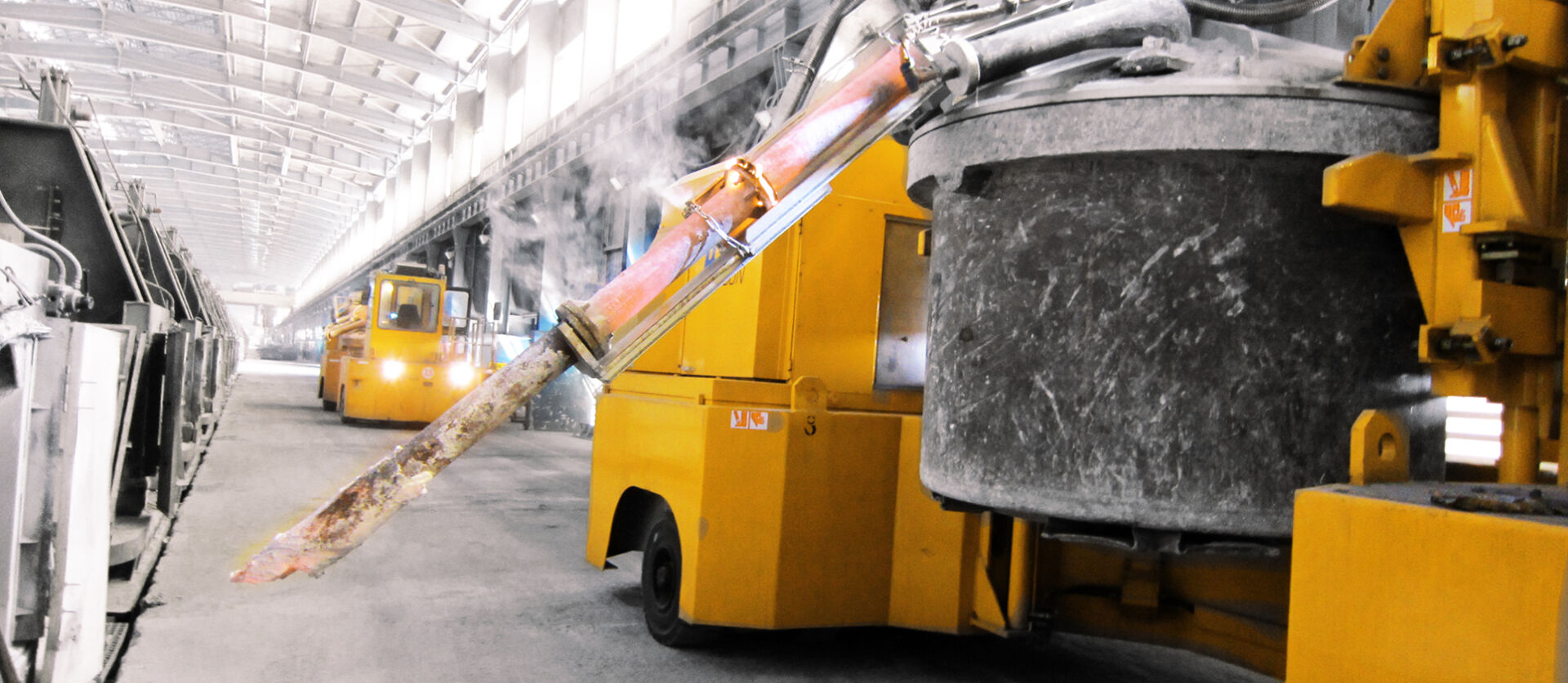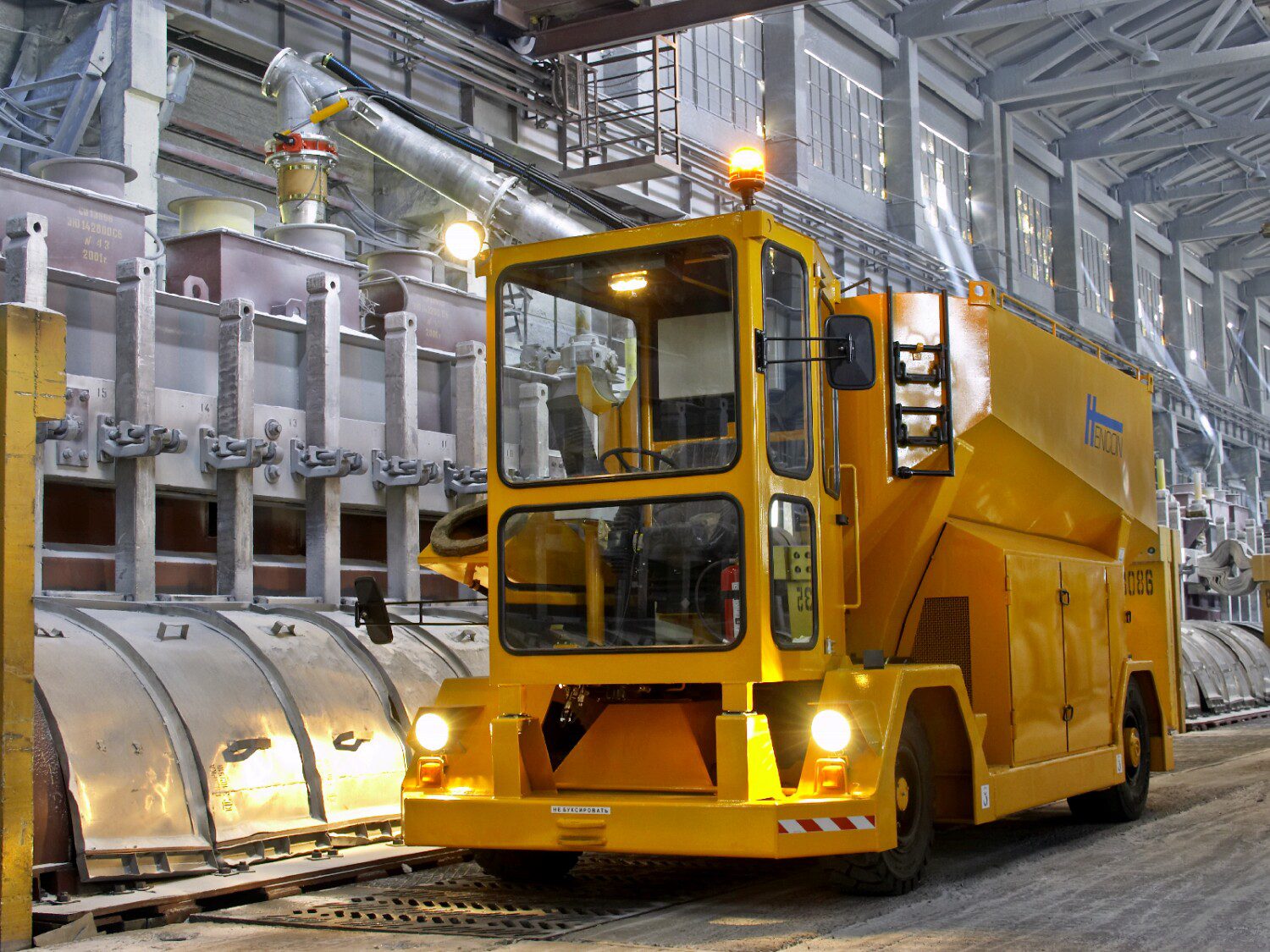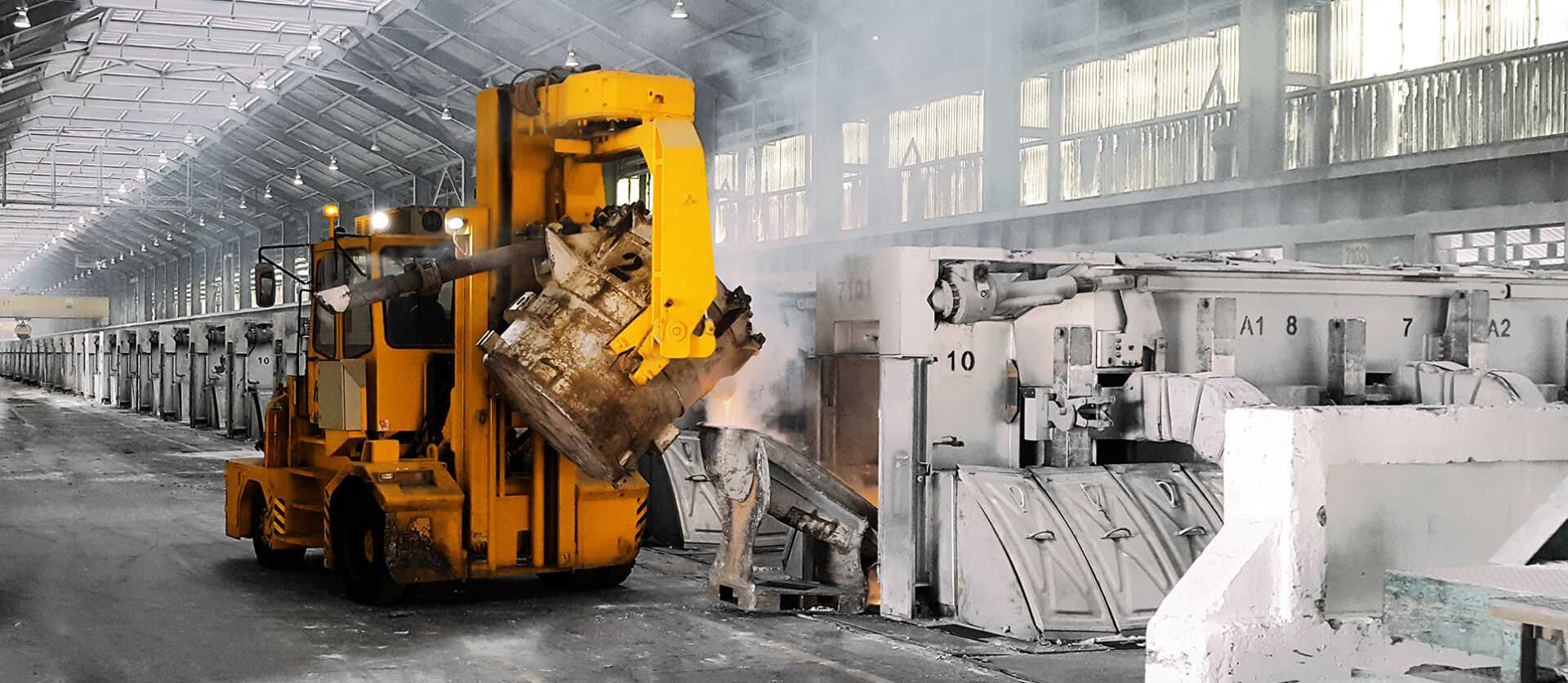Aluminium tapping vehicle
Carefully developed to ensure the safest tapping of hot metal. The system combines multiple machines, making it much more flexible than a pot-pending crane. It can reach all pots, even when other cranes are in the way. The closed system means that contact between liquid aluminium and the air is avoided, resulting in minimal dross which, in turn, means greater efficiency.
Saving money by reducing number of operators
The Hencon Aluminium Tapping Vehicle can be operated by one operator. The alternative of this vehicle would be either a more expensive PTC or a combination of machines e.g. PTC, Ladle Transport Vehicle or Ladle Transport Tilting Vehicle. This requires multiple operators.
Smelter environment
The vehicle is capable to operate in dusty, corrosive atmosphere (alumina dust, fluoride) and a strong magnetic field. Motor air intake is airtight and equipped with special filters.
Special attention has been taken to ensure good visibility and safety of operation when reversing in order to permit easy and safe operation at loading and unloading areas.
All machines can be produced according to your specifications.
Saving money by reducing dross
The closed system avoids the contact between the liquid aluminium with air, this results in a minimal unnecessary dross production and therefor a higher efficiency of your aluminium production.

Potroom solutions


